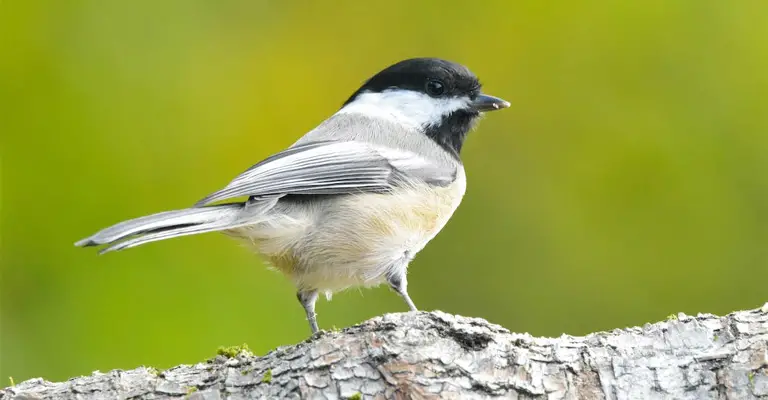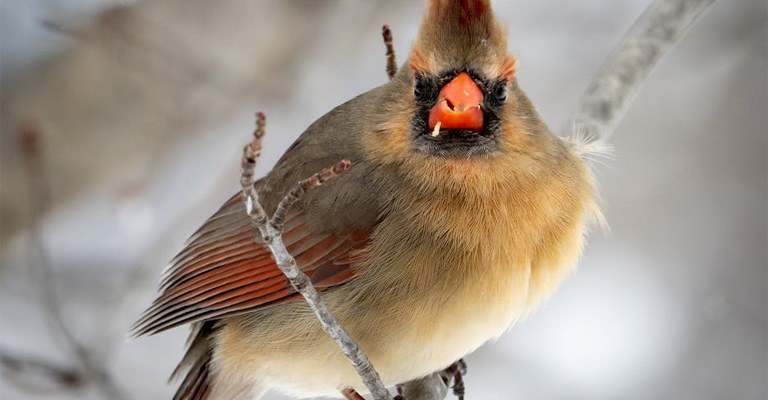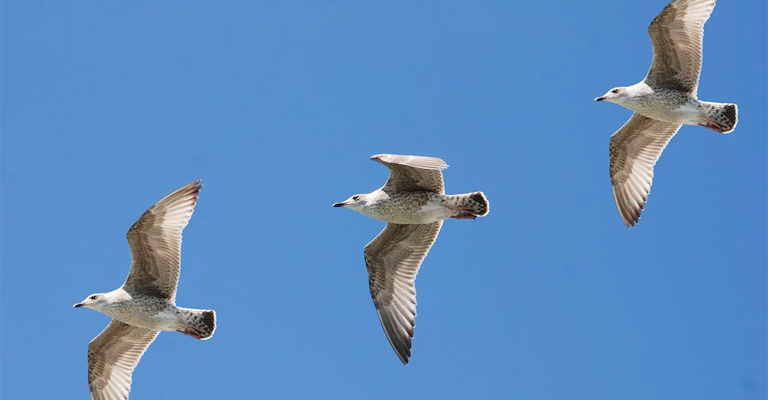The world of avian diversity is a captivating realm, with thousands of bird species gracing our skies and landscapes. Learning how to identify birds is a rewarding pursuit that connects us with nature’s beauty.
Each species boasts unique features, such as plumage patterns, calls, and behaviors that set them apart. Bird identification is not only a hobby but also an essential skill for birdwatchers, naturalists, and conservationists.
It enables us to appreciate the subtle nuances of the avian world and contribute to bird conservation efforts.
In this guide, we’ll explore how to identify birds that will empower you to confidently recognize and differentiate various bird species, whether you’re a novice or a seasoned birder.

What Makes A Bird A Bird?
Birds are a group of animals that have some unique characteristics that distinguish them from other vertebrates.
Here are some of the main features that make a bird a bird:
Feathers
Birds are the only animals that have feathers, which are made of keratin and other proteins. Feathers help birds to fly, keep warm, attract mates, and camouflage themselves.
Feathers come in different shapes, sizes, colors, and patterns, depending on the bird’s species and function.
Beaks
Birds have beaks, also called bills, which are extensions of their skulls. Beaks are used for eating, drinking, preening, fighting, and communicating. Beaks vary in shape and size, depending on the bird’s diet and habitat.
For example, hummingbirds have long and thin beaks for sipping nectar, while eagles have hooked and sharp beaks for tearing meat.
Wings
Birds have wings, which are modified forelimbs that allow them to fly. Wings are composed of bones, muscles, tendons, and feathers. Wings also help birds to balance, steer, and glide in the air.
Not all birds can fly, however. Some birds, such as ostriches and penguins, have wings that are adapted for running or swimming.
Endothermy
Birds are endothermic, which means they can generate and maintain their own body heat from their metabolism. Endothermy enables birds to live in a wide range of temperatures and climates.
Birds have a high body temperature, usually around 40 degrees Celsius or 104 degrees Fahrenheit.
Eggs

Birds lay eggs, which are enclosed in a hard shell made of calcium carbonate. Eggs protect and nourish the developing embryos inside them.
Eggs come in different sizes, shapes, colors, and markings, depending on the bird’s species and environment. Some birds lay only one egg at a time, while others lay dozens.
Parental care
Birds provide parental care for their offspring, which means they feed, protect, and teach them until they are independent. Parental care can involve one or both parents, depending on the bird’s mating system.
Some birds also form social bonds with their mates and offspring, such as parrots and crows.
Vocalization
Birds produce vocal sounds, such as songs, calls, and alarms, using their syrinx, which is a specialized organ at the base of their trachea.
Vocalization helps birds to communicate with each other for various purposes, such as attracting mates, defending territories, warning predators, and coordinating movements. Some birds can also mimic other sounds or learn human speech.
What Is The Function Of Feathers In Birds?

Feathers are amazing structures that are unique to birds and their dinosaur ancestors. They have many functions and forms, such as flight, insulation, communication, and camouflage.
Here are some of the main functions of feathers in birds:
Flight
Feathers enable birds to fly by creating an airfoil that generates lift and thrust. The flight feathers are very strong and stiff feathers that are found on the wings and tails of birds. They help birds to balance, steer, and glide in the air.
Insulation
Feathers help birds to keep warm by trapping pockets of air close to their body. The downy feathers and the semiplume feathers are able to adjust the amount of air they trap by fluffing or smoothing their feathers.
This allows birds to regulate their body temperature in different climates.
Protection
Feathers shield birds from wind, moisture, sun, and predators. The contour feathers cover the body and wings of the bird, creating a smooth and resilient surface that sheds water and resists wear.
The dark-colored feathers may also provide protection from the sun’s rays. The feathers also protect the bird’s skin from bruises and scrapes.
Communication
Feathers help birds to communicate with each other for various purposes, such as attracting mates, defending territories, warning predators, and coordinating movements.
The feathers can display different colors, patterns, shapes, and movements that convey different messages to other birds. Some feathers can also produce sounds, such as humming, drumming, and whistling.
How Do Feathers Help Birds To Fly?

Feathers are amazing structures that are unique to birds and their dinosaur ancestors.
They have many functions and forms, such as flight, insulation, communication, and camouflage.
Here are some of the main ways that feathers help birds to fly:
Lift And Thrust
Feathers enable birds to fly by creating an airfoil that generates lift and thrust. The flight feathers are very strong and stiff feathers that are found on the wings and tails of birds.
They help birds to balance, steer, and glide in the air. The primary feathers are the largest of the flight feathers and propel the bird through the air. The secondary feathers sustain the bird in the air, giving it lift.
Streamlining And Waterproofing
Feathers help birds to fly by reducing drag and friction. The contour feathers cover the body and wings of the bird, creating a smooth and resilient surface that sheds water and resists wear.
The feathers also protect the bird’s skin from bruises and scrapes. The feathers can be controlled by muscles that allow the bird to adjust its shape and position for optimal aerodynamics.
Temperature Regulation
Feathers help birds to fly by maintaining their body temperature. Birds are warm-blooded and have to keep a body temperature of about 40 degrees Celsius or 104 degrees Fahrenheit.
Under their contour feathers are tiny soft feathers called down, which lie against the skin and keep the bird warm. Down is great at keeping in warmth, with people using it to make quilts and duvets.
In cold weather, a bird also fluffs out its contour feathers to trap a layer of warm air.
Communication And Camouflage
Feathers help birds to fly by allowing them to communicate with each other and avoid predators. The feathers can display different colors, patterns, shapes, and movements that convey different messages to other birds.
Some feathers can also produce sounds, such as humming, drumming, and whistling.
The feathers also help birds to blend in with their environment or stand out from it, depending on their needs.
FAQ
Begin with common local birds. Use field guides or birding apps for accurate visuals and information. Focus on size, color patterns, and habitat to narrow down possibilities.
Observe traits like size, shape, color of plumage, markings, beak shape, and behavior. These details provide crucial clues for accurate identification.
Yes, bird calls, and songs are valuable cues. Use apps or websites with audio recordings to match sounds to specific species. Familiarizing yourself with vocalizations enhances your identification skills.
Focus on distinct features. Note subtle differences in markings, color shades, or behavior. Field guides often provide comparison illustrations to help distinguish similar species.
Field guides, birding apps like Merlin Bird ID and iNaturalist, online databases like eBird, and local birding groups provide resources. These tools offer images, sounds, range maps, and community expertise for accurate identifications.
Conclusion
Identifying birds is a journey that enriches our understanding of the natural world and cultivates a deep appreciation for its intricacies.
As we decode plumage colors, discern unique markings, and listen to melodic calls, we become attuned to the rich tapestry of bird life around us.
Whether you’re observing birds in your backyard, on a hike, or during travels, the ability to identify them enhances every encounter.
Remember, bird identification is about more than just naming species; it’s about connecting with the stories of each bird’s life, habitat, and role in the ecosystem.
By nurturing your identification skills, you’ll embark on a lifelong adventure, continually uncovering the wonders of avian diversity and contributing to the preservation of these captivating creatures.